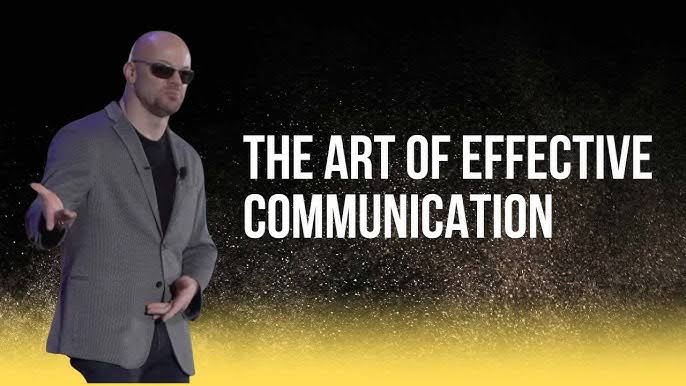In the modern collaborative workplace, teams are the engine driving innovation, productivity, and strategic growth. But the success of any team doesn’t depend solely on talent or tools—it hinges largely on communication. The art of effective communication in teams is more than just exchanging information. It’s about building trust, encouraging transparency, and creating an environment where every member feels heard and valued.
As of 2025, in an increasingly hybrid and globalized world of work, communication is both more challenging and more crucial than ever. Remote teams, cross-cultural dynamics, and digital platforms demand heightened awareness and intentionality in how people connect and collaborate. Mastering communication is no longer a soft skill—it’s a core competency.
Why Effective Team Communication Matters
Effective communication is the foundation of high-performing teams. When communication flows freely and constructively, teams benefit in several critical ways:
- Improved collaboration: Team members can share ideas, feedback, and updates clearly and in real time.
- Faster problem-solving: Open communication helps identify and address issues early before they escalate.
- Higher morale: When everyone feels included and respected, motivation and engagement increase.
- Reduced misunderstandings: Clear messaging minimizes conflict and wasted effort.
- Better decision-making: Teams that communicate well can weigh diverse perspectives and reach consensus more efficiently.
Without strong communication, even the most skilled teams struggle to align, execute, and succeed.
Core Principles of Effective Team Communication
1. Clarity and Conciseness
Communication should be simple, direct, and easy to understand. Whether it’s a Slack message or a team meeting, clarity avoids confusion and saves time.
Tips for clear communication:
- Use plain language without jargon
- Focus on the key message
- Break complex information into steps
- Confirm understanding with follow-ups
2. Active Listening
Listening is just as important—if not more—than speaking. Active listening means fully concentrating, understanding, responding, and remembering what is being said.
Traits of active listeners include:
- Maintaining eye contact (in person or via video)
- Avoiding interruptions
- Reflecting or paraphrasing what others say
- Asking thoughtful questions
Listening validates the speaker and fosters mutual respect.
3. Constructive Feedback
Feedback should be continuous, actionable, and respectful. In effective teams, feedback is normalized, not feared. It’s seen as a tool for growth rather than criticism.
Key guidelines:
- Use “I” statements to own your perspective
- Focus on behavior, not personality
- Balance criticism with appreciation
- Offer solutions alongside observations
Constructive feedback improves performance and strengthens accountability.
4. Emotional Intelligence and Empathy
Strong team communicators understand that emotions affect how messages are sent and received. Emotional intelligence helps individuals regulate their own feelings and navigate the emotions of others.
High-EQ communicators:
- Show empathy and compassion
- Stay calm under pressure
- Recognize tone, body language, and unspoken cues
- Adapt their communication style to suit the context
Empathetic teams are more connected, inclusive, and cooperative.
5. Consistent Communication Channels
Inconsistent communication leads to confusion. Teams need agreed-upon platforms and protocols for exchanging information.
Effective teams typically:
- Use project management tools (like Asana, Trello, or Monday.com) for updates and task tracking
- Host weekly or biweekly check-ins to maintain alignment
- Use instant messaging platforms (e.g., Slack, Teams) for quick updates
- Reserve emails for formal or longer communications
- Hold regular video calls to enhance interpersonal connection
Consistency reduces information loss and keeps everyone on the same page.
Overcoming Common Communication Challenges
Despite best intentions, communication breakdowns happen. Recognizing common pitfalls can help teams avoid them.
Some frequent challenges include:
- Assumptions and misinterpretations
- Lack of feedback or delayed responses
- Poorly managed virtual meetings
- Cultural differences in tone or formality
- Information overload or message fatigue
To overcome these, teams should:
- Encourage questions to clarify understanding
- Establish response time expectations
- Appoint moderators for virtual discussions
- Foster an inclusive culture that respects diverse communication norms
- Limit unnecessary communication and streamline messaging
Proactively addressing these issues creates smoother workflows and stronger bonds.
Building a Culture of Open Communication
Sustainable communication doesn’t happen by accident—it’s cultivated intentionally. Leaders play a crucial role in setting the tone.
Ways to build a communication-friendly culture:
- Lead by example: Be transparent, responsive, and approachable
- Encourage psychological safety: Allow space for disagreement and risk-taking without fear of retaliation
- Normalize feedback: Give and receive feedback regularly, not just during reviews
- Celebrate diverse voices: Value different perspectives and communication styles
- Invest in training: Offer workshops on communication, public speaking, or conflict resolution
A strong communication culture boosts team cohesion and long-term performance.
Effective Communication in Remote and Hybrid Teams
As remote work becomes more embedded in modern workplaces, communication strategies must evolve. Physical separation can lead to misalignment, isolation, and silos if not managed carefully.
Best practices for remote team communication include:
- Daily stand-ups or asynchronous updates
- Clear digital etiquette (e.g., reply time expectations, tone guidelines)
- Virtual team-building activities to foster connection
- Transparent documentation in shared folders or internal wikis
- Over-communication, when in doubt—to avoid assumptions
Remote teams that communicate intentionally can be just as effective, if not more, than traditional office teams.
Conclusion
The art of effective communication in teams is a powerful, multifaceted skill that drives collaboration, innovation, and shared success. It requires a mix of clarity, empathy, feedback, and strategy to ensure that everyone is not just heard, but understood and empowered.
In a world where teamwork is essential and the nature of work is rapidly evolving, mastering communication is one of the most valuable investments any team can make. With awareness, practice, and commitment, teams can transform how they work together—and ultimately, what they can achieve together.



